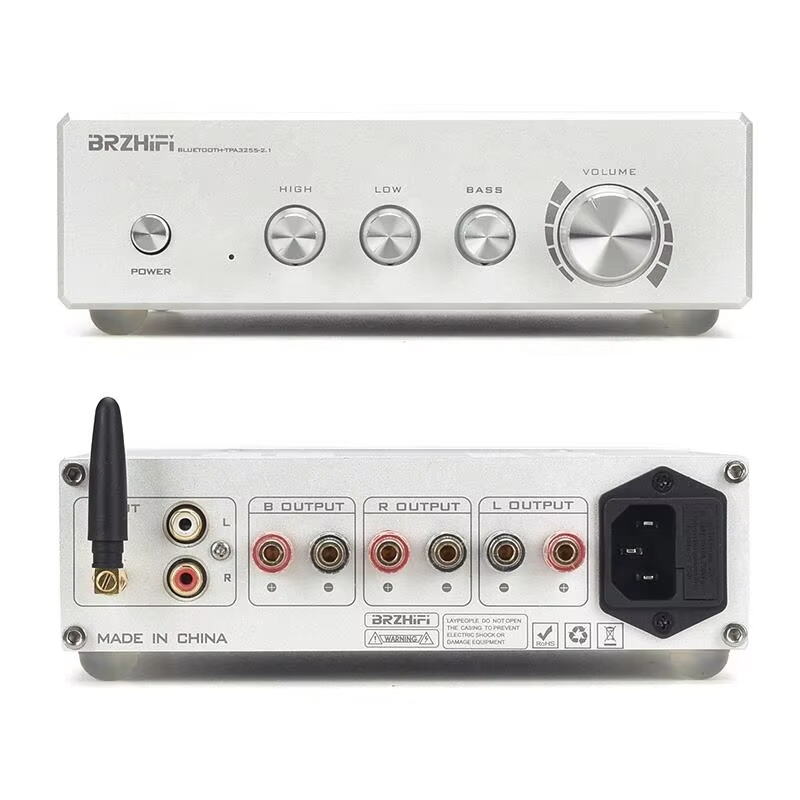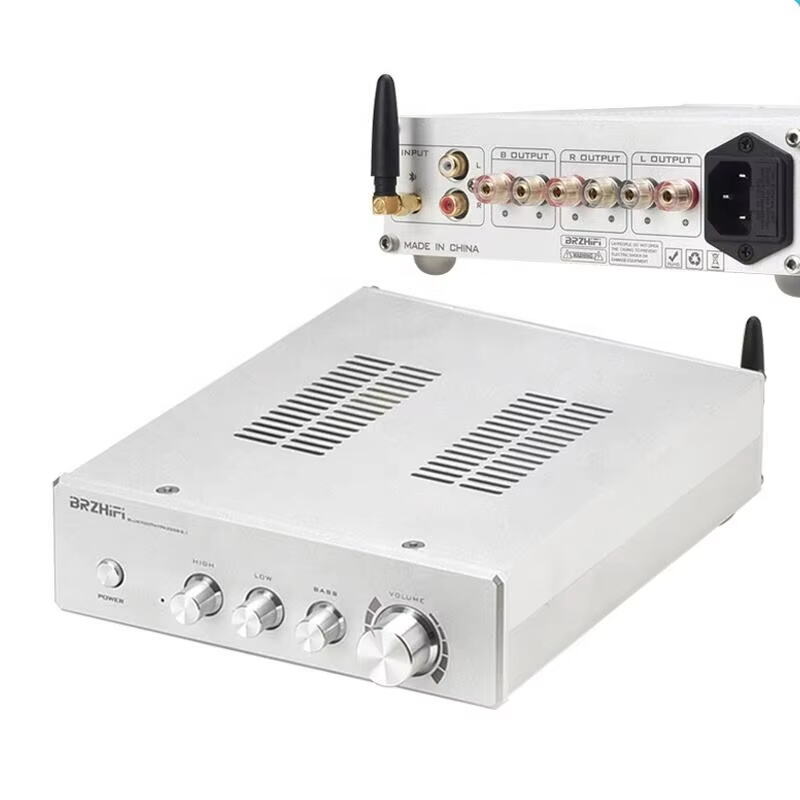Unlocking Efficient Audio Performance with Modern Amplification Technology
In the evolving world of audio technology, delivering high-quality sound while maintaining energy efficiency is a key goal for manufacturers and consumers alike. Class D amplifiers have become a pivotal solution in this regard, offering a blend of compact design, powerful output, and remarkable efficiency. These amplifiers have revolutionized the way audio systems are built and utilized across various platforms, from portable speakers to large-scale professional sound systems.
Choosing the best Class D amplifiers involves understanding their unique characteristics, the technology behind them, and their application in modern audio environments. This article delves deeply into these aspects, providing insights into why Class D amplifiers stand out and how to select the ideal one for efficient audio performance.
Understanding Class D Amplifier Technology
Fundamentals of Class D Amplifiers
Class D amplifiers operate through a switching mechanism where output transistors rapidly toggle between on and off states. This pulse-width modulation (PWM) technique allows the amplifier to minimize energy loss, drastically improving efficiency. Unlike linear amplifiers that dissipate excess energy as heat, Class D amplifiers convert the majority of electrical power directly into audio output.
This technology has enabled the production of smaller, lighter amplifiers that require less cooling and can be integrated into compact audio devices without sacrificing power or quality.
Key Components and Signal Processing
The performance of Class D amplifiers depends heavily on their internal components, such as MOSFET transistors and advanced digital control circuitry. High-speed switching devices manage the rapid transitions essential for PWM, while integrated feedback loops help maintain audio fidelity by correcting distortion and noise.
Additionally, output filters smooth the PWM signal back into an analog waveform suitable for driving speakers. These components work together to achieve clean, powerful sound reproduction while maintaining high efficiency.

Advantages of Class D Amplifiers in Audio Systems
Superior Energy Efficiency
One of the standout features of Class D amplifiers is their exceptional energy efficiency, often exceeding 90%. This high efficiency means that most input power is converted into usable audio output rather than wasted as heat. Such efficiency reduces power consumption, extends battery life in portable devices, and minimizes cooling requirements.
For users seeking sustainable and cost-effective audio solutions, Class D amplifiers provide significant advantages over traditional amplifier classes.
Compact Size and Lightweight Design
The reduced heat generation in Class D amplifiers enables the use of smaller heat sinks or even passive cooling methods. This allows for more compact and lightweight amplifier designs, which are particularly beneficial for portable audio devices, automotive sound systems, and home entertainment units.
Smaller amplifiers not only save physical space but also offer more flexibility in system design and installation.
Evaluating Audio Quality and Performance
Overcoming Noise and Distortion Challenges
Early Class D amplifiers faced criticism for audio quality issues such as switching noise and harmonic distortion. However, advancements in semiconductor technology, modulation schemes, and filtering have significantly improved sound fidelity. Modern Class D amplifiers deliver clear, dynamic sound with low total harmonic distortion (THD) and high signal-to-noise ratios.
The integration of sophisticated digital control and error correction techniques ensures that Class D amplifiers meet the demands of high-fidelity audio applications.
Versatility in Application
Class D amplifiers are highly versatile, supporting various audio configurations including mono, stereo, and multi-channel systems. Their ability to deliver high power output in compact forms makes them suitable for use in home audio systems, portable Bluetooth speakers, car audio, and professional sound reinforcement.
This versatility makes Class D amplifiers a popular choice for diverse audio environments and user needs.
Choosing the Best Class D Amplifier for Your Setup
Power Requirements and Speaker Compatibility
Selecting the right Class D amplifier starts with understanding the power requirements of your audio system. Matching the amplifier’s power output with your speakers ensures optimal performance and longevity. It’s important to consider factors such as speaker impedance, sensitivity, and intended use to avoid distortion or damage.
A well-matched amplifier-speaker pair maximizes sound quality and system reliability.
Feature Set and Connectivity Options
Beyond raw power, the best Class D amplifiers offer features that enhance usability and integration. Look for options like built-in digital signal processing (DSP), adjustable gain controls, and crossover filters to fine-tune audio output. Connectivity features such as Bluetooth, Wi-Fi, or wired inputs expand the amplifier’s compatibility with modern devices.
Ease of integration and customization can significantly improve the user experience and system flexibility.
The Role of Efficiency in Modern Audio Design
Impact on Energy Consumption and Environmental Benefits
High-efficiency Class D amplifiers contribute to lower energy consumption, making them environmentally friendly compared to less efficient amplifier types. Reduced power usage means smaller carbon footprints, aligning with global sustainability efforts and user preferences for green technology.
In applications like portable and battery-powered devices, efficiency translates into longer usage times and reduced charging needs.
Operational Cost Savings
Lower energy consumption also leads to tangible cost savings over the lifespan of the amplifier. Reduced cooling requirements and improved reliability decrease maintenance and operational expenses. For commercial installations, these savings can be substantial, making Class D amplifiers economically advantageous.
Investing in efficient amplification technology offers both short-term and long-term financial benefits.
Innovative Developments in Class D Amplifier Technology
Advances in Semiconductor Materials
Emerging semiconductor technologies such as gallium nitride (GaN) and silicon carbide (SiC) transistors promise to enhance Class D amplifier performance further. These materials enable faster switching speeds, higher voltage tolerances, and lower losses, pushing efficiency and audio quality to new heights.
Such innovations will expand the applications and capabilities of Class D amplifiers in the near future.
Integration with Smart Audio Systems
The future of Class D amplifiers lies in seamless integration with smart technologies. Incorporating wireless control, voice activation, and network connectivity allows users to manage their audio environments with ease. This integration supports multi-room audio setups, personalized sound profiles, and automation features.
Smart-enabled Class D amplifiers represent the next step in audio system evolution, combining performance with convenience.
Frequently Asked Questions
What sets Class D amplifiers apart from other amplifier classes?
Class D amplifiers use high-speed switching to achieve superior efficiency, converting most input power into audio output while minimizing heat generation compared to traditional linear amplifiers.
Are Class D amplifiers suitable for professional audio applications?
Yes, modern Class D amplifiers deliver high power and excellent sound quality, making them appropriate for both professional and consumer-grade audio systems.
How do I ensure compatibility between a Class D amplifier and my speakers?
Consider the power ratings, impedance, and sensitivity of your speakers. Matching these parameters with the amplifier specifications helps prevent distortion and damage, ensuring optimal performance.
Can Class D amplifiers support wireless connectivity?
Many contemporary Class D amplifiers include wireless features such as Bluetooth and Wi-Fi, enabling easy integration with modern digital devices and smart home systems.
Table of Contents
- Unlocking Efficient Audio Performance with Modern Amplification Technology
- Understanding Class D Amplifier Technology
- Advantages of Class D Amplifiers in Audio Systems
- Evaluating Audio Quality and Performance
- Choosing the Best Class D Amplifier for Your Setup
- The Role of Efficiency in Modern Audio Design
- Innovative Developments in Class D Amplifier Technology
- Frequently Asked Questions

